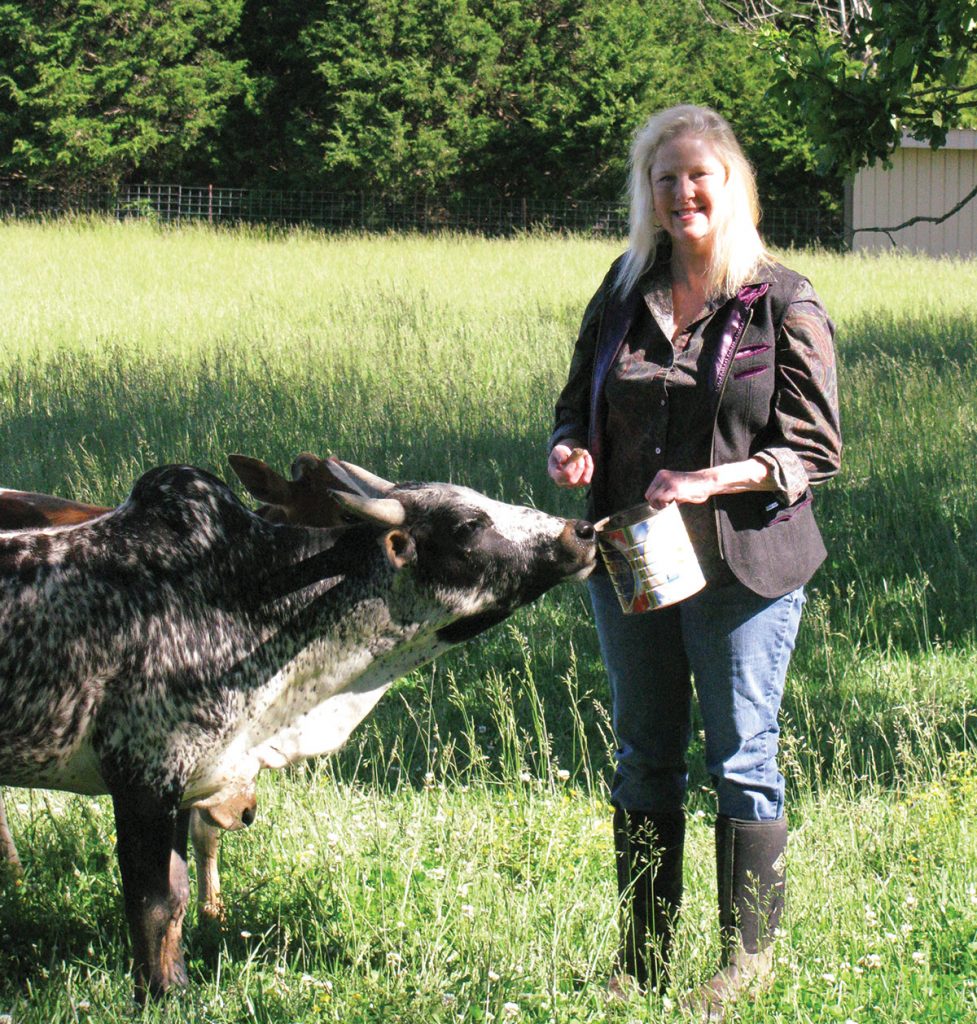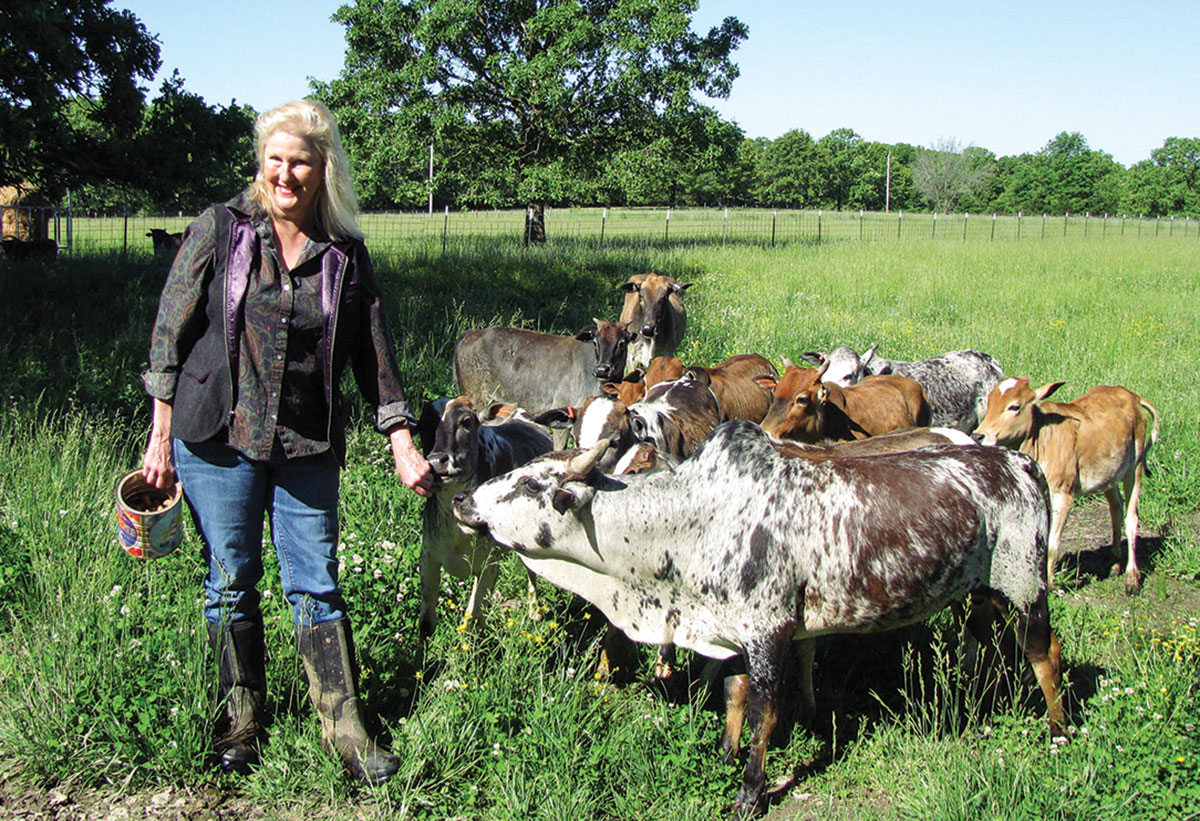
Danis Nickell finds a specialized market for miniture cattle
Bigger is not always better. At least that’s the way Danis Nickell feels about her Miniature Zebu cattle. She has been raising them since 2000 on her 65-acre farm near Marshfield, Mo., in Webster County.
“I went to an exotic animal auction in 2000 and saw a pair of these that I thought were miniature Brahmans. Turns out they were this Miniature Zebu breed and I fell in love with them and bought my first pair,” Danis explained.
Her herd has grown to around 50 head. While Zebus can be used for meat and milk production, Danis does neither. She breeds registered animals.
“I sell a lot of bottle babies to petting zoos, 4-H kids, FFA kids and people with small acreages. So that’s my niche’ in it,” she stated.
“Miniature” Zebu must be 42 inches or less in height.
“On average my herd is between 34 and 36 inches for most of them. Some are smaller and some are on the 40-inch range,” Danis said, adding that bloodlines determine height.
She estimated the weight of a full-grown cow to be between 400 to 450 pounds, and bulls to weigh around 650 pounds.
Zebus originated in India and have a docile temperament.
“But if you get them cornered some show their Brahman instinct and will put you on the wall,” Danis said. “The Zebu incorporates full-size Brahmas. It incorporates Zebus and several in between. But Zebu are their own breed. They are one of the oldest breeds of cows in the world.”
Most people in this area don’t know what a Zebu is.
“They think it’s a cross between a zebra and a cow,” Danis laughed.
Four times a year there is an exotic animal auction in Macon, Mo. She sells some there and also takes some to Kansas. People there buy them for their grandkid’s 4-H projects.
Her cattle may be show prospects for others, but Danis does not show.
“This part of the country doesn’t have any sanctioned Miniature Zebu shows. There are some in Texas, Florida and in Oklahoma. They have Zebu-only shows,” Danis said.
She has nine bulls in her herd. One of the bulls is 36 1/2-inches tall. Only one of the bulls is dehorned.
“He came from Florida and was shown until he was a year old. He was dehorned for showing,” Danis explained.
Both male and females have horns. A cow’s horns grow to about 6 inches long.
“The bull’s horns continue to grow well into their teens,” Danis said. She estimated her bulls’ horns to be around 16-inches long.
The most common color for Zebu is gray.
“From there it goes to red and then people have bred to produce spots and paints. That’s what I have done. The spots and paints are very popular and rare,” Danis said, adding that they are more valuable.
The average birth weight of a Miniature Zebu is between 16 and 20 pounds, but some are as light as 15 pounds. Danis said Zebu have the same issues that full-size cattle have when it comes to calving. There really aren’t problems unless a bull is too big.
She does what she calls “family planning” with her herd.
“We don’t like fall calves. We just want spring calves, because as small as they are you don’t want them to even try to go into winter,” Danis stated.
Zebu cattle do have a very specific health issue.
“They are very intolerant to cold weather,” Danis said. “They don’t have normal hair like standard cattle. They kind of have slick hair, more like a Dachshund. They have to have a barn and shelter in the wintertime, or they will frostbite and they’ll lose their tails or the tips of their ears. You don’t have to have heat lamps unless they’re born this small in the winter.”
Danis is getting ready to build two more shelters. Her operation has grown so much that “everybody can’t fit under that 120-foot barn anymore,” she explained.
“The first raindrop, even in the summer, the Zebu go in the shelter. But they will also lie outside when it’s 110 degrees, where most cattle are under a shade tree or in the pond,” Danis stated. “They originated from super hot weather, so that’s why they don’t tolerate the cold, but will lie out in the sun like it feels good.”
For someone interested in raising Zebu, Danis recommends doing your homework first.
“Make sure you know what you’re getting into, because you can’t just buy them and throw them out in the pasture and expect them to do well in the wintertime in colder climates, such as here,” she added.







